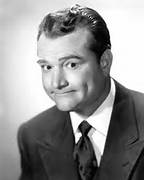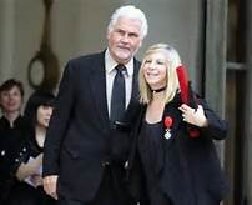
Sneakers (also called trainers, athletic shoes, tennis shoes, gym shoes, kicks, sport shoes, flats, running shoes, or runners) are shoes primarily designed for sports or other forms of physical exercise, but which are now also widely used for everyday casual wear.
Since their popularization by companies such as Converse, Nike and Spalding in the mid 20th century, they have become attire, with variety growing in many global markets exponentially. Like other parts of the global clothing industry, manufacture of shoes is heavily concentrated in Asia with nine in ten shoes produced in that region.
Contemporary sneakers are largely made from synthetic materials, and the materials and manufacturing process produce, on average, about 31 lb of CO2 emissions. Some companies are trying to substitute more sustainable materials in their manufacture. About 90% of shoes end up in landfills at end of life.
These shoes acquired the nickname 'plimsoll' in the 1870s, derived according to Nicholette Jones' book The Plimsoll Sensation, from the colored horizontal band joining the upper to the sole, which resembled the Plimsoll line on a ship's hull. Alternatively, just like the Plimsoll line on a ship, if water got above the line of the rubber sole, the wearer would get wet.
Plimsolls were widely worn by vacationers and also began to be worn by sportsmen on the tennis and croquet courts for their comfort. Special soles with engraved patterns to increase the surface grip of the shoe were developed, and these were ordered in bulk for the use of the British Army. Athletic shoes were increasingly used for leisure and outdoor activities at the turn of the 20th century - plimsolls were even found with the ill-fated Scott Antarctic expedition of 1911. Plimsolls were commonly worn by pupils in schools' physical education lessons in the UK from the 1950s until the early 1970s.
British company J.W. Foster and Sons designed and produced the first shoes designed for running in 1895; the shoes were spiked to allow for greater traction and speed. The company sold its high-quality handmade running shoes to athletes around the world, eventually receiving a contract for the manufacture of running shoes for the British team in the 1924 Summer Olympics. Harold Abrahams and Eric Liddell won the 100 m and 400 m events, kitted out with Foster's running gear.
This style of footwear also became prominent in America at the turn of the 20th century, where they were called 'sneakers'. In 1892, the U.S. Rubber Company introduced the first rubber-soled shoes in the country, sparking a surge in demand and production. The first basketball shoes were designed by Spalding as early as 1907. The market for sneakers grew after World War I, when sports and athletics increasingly became a way to demonstrate moral fiber and patriotism. The U.S. market for sneakers grew steadily as young boys lined up to buy sneakers endorsed by football player Jim Thorpe and Converse All Stars endorsed by basketball player Chuck Taylor.
Win over party guests or even your family with these homemade, melt-in-your-mouth Potato Puffs. The warm, golden crust contrasts with the creamy potato filling to ensure that you'll never want store-bought again!
- 3 pounds Idaho Russet potatoes, peeled and quartered
- 1 large onion, chopped
- 3 tablespoons olive oil
- 1 cup cracker crumbs
- 2 teaspoons salt
- 1/2 teaspoon black pepper
- 2 egg yolks, beaten
- Preheat oven to 400º. Coat a baking sheet with cooking spray.
- Place potatoes in a soup pot and add just enough water to cover them. Bring to a boil over high heat then reduce heat to medium and cook 12 to 15 minutes, or until fork-tender. Drain off water, mash the potatoes, and allow to cool.
- In a small saucepan, saute onion in olive oil over medium heat until tender. Add sauteed onion, the cracker crumbs, salt, and pepper to mashed potatoes; mash mixture.
- With your hands, roll mixture into balls and place potato balls on prepared baking sheet. Brush with egg yolk and bake 40 to 45 minutes, or until golden and crusty.
1921 – John Glenn, American astronaut and politician (d. 2016)
1939 – Dion DiMucci, American singer-songwriter (Dion and the Belmonts)

1950 – Richard Branson, English businessman, founded Virgin Group
Generally, when you are “in the doghouse,” you have fallen out of favor with someone, usually your spouse or significant other. However, you can also be “in the doghouse” with a friend or your boss at work. This day uses all those good cliches to get you back in the big house where you belong.
Here are some tips to get “out of the doghouse.”
- Put down the technology – If this is on your naughty list, don’t use email, texting, or other technology to apologize. A face to face or handwritten apology is best.
- Meet at a favorite coffee house – The purpose here is to start talking. Listen to what the other person has to say and do not be judgmental or defensive. Find out why you are “in the doghouse” and give suggestions on how you can improve or fix the issue.
- Send flowers, chocolates, or an appropriate gift – Include a hand-written note about how you are committed to fixing the issue. Do this AFTER you have already spoken. You will win extra brownie points as this will be unexpected. (Brownies will garner additional points, too!)
HOW TO OBSERVE NATIONAL GET OUT OF THE DOGHOUSE DAY
Whoever is in the doghouse, let ’em out. The day pardons their transgression. However, if you’re in the doghouse, any or all of the above-suggested tips would be acceptable. Help a person out!
NATIONAL GET OUT OF THE DOGHOUSE DAY HISTORY
Heidi Richards Mooney of Ft. Lauderdale, FL founded National Get Out of the Doghouse Day in 1999.

















No comments:
Post a Comment